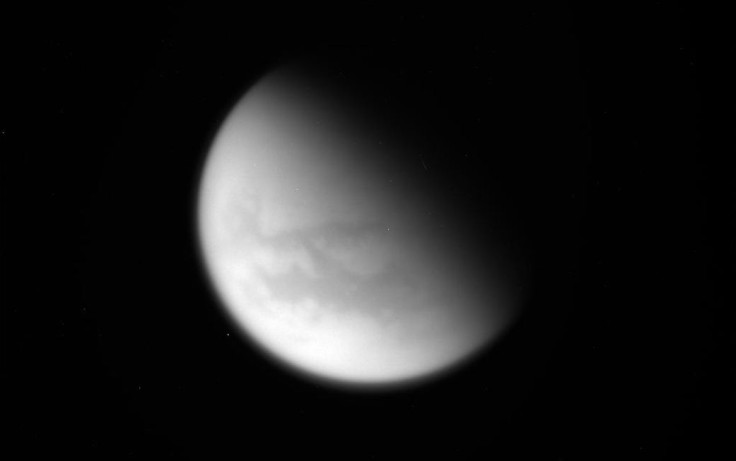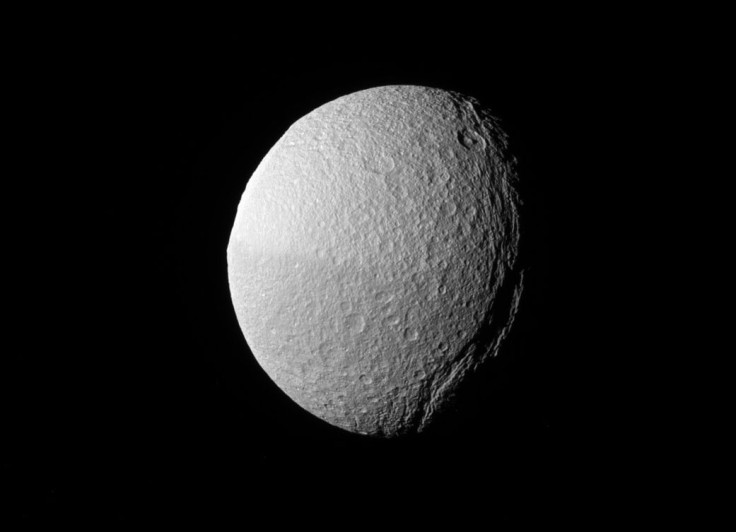Cassini Makes Last Close Titan Flyby, Captures Canyon On Tethys

The Cassini spacecraft made its final flyby of Saturn’s largest moon Titan in the early hours of Saturday, and images it captured of the stellar body were released Monday by NASA and the European Space Agency. The spacecraft, which has been studying the Saturn system since 2004, will start its Grand Finale mission Wednesday and end it by plunging into the planet’s atmosphere Sept. 15.
The last close flyby of Titan happened at 2:08 a.m. EDT Saturday, when Cassini was 979 kilometers (608 miles) above the moon’s surface. Among the data it transmitted to Earth over the last few days are radar images of the hydrocarbon seas and lakes covering the planet-sized moon’s north polar region.
“Cassini’s up-close exploration of Titan is now behind us, but the rich volume of data the spacecraft has collected will fuel scientific study for decades to come,” Linda Spilker, the mission’s project scientist at NASA’s Jet Propulsion Laboratory in Pasadena, California, said in a statement Monday.
Using Titan’s gravity as a slingshot, Cassini is now moving into position for its last mission, the Grand Finale, during which it will make 22 dives — one each week — through the rings of Saturn, as well as the gas giant’s inner rings and its atmosphere. The first of these dives takes place Wednesday.
Read: Cassini Photographs Pan, Saturn’s Ravioli-Shaped Moon
Before the mission finally comes to an end, Cassini will make a last, distant flyby of Titan on Sept. 11, a maneuver that will ensure the spacecraft doesn’t crash into Enceladus, an ocean-moon of Saturn that is potentially habitable.
Another image released Monday by NASA shows a massive canyon on Tethys, another of Saturn’s 63 known moons. The Ithaca Chasm is up to 60 miles wide and about 660 miles long, which is almost three-fourths of the icy moon’s surface. The maximum depth of the rift is about 2.4 miles, according to a statement that accompanied the image.

Cassini is a collaboration between NASA, the European Space Agency and the Italian Space Agency. The European Geosciences Union will hold a press conference at 1:30 p.m. GMT (9:30 a.m. EDT) Tuesday to preview the Grand Finale and to talk about some of Cassini’s many achievements over the past 13 years. The press conference, being held in Vienna, can be watched live here.
© Copyright IBTimes 2024. All rights reserved.





















